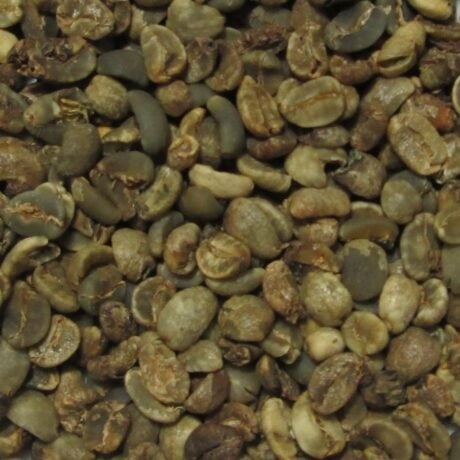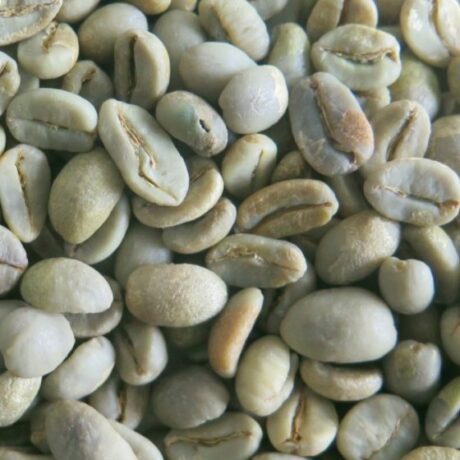Coffee is one of the most popular and widely consumed beverages globally, and it plays a significant role in many cultures and economies around the world. The production of coffee beans is a critical industry, supporting millions of livelihoods and contributing to global trade. This article explores the top 10 coffee-producing countries, providing detailed information about their production amounts and percentages in the global coffee market.
1. The Top 10 Coffee-Producing Countries in the World: Brazil
Production Amount: 3.5 million tonnes
Percentage of Global Production: 34.31%
Specialty Coffee: Brazil Daterra Estate Coffee
Brazil is the undisputed heavyweight champion when it comes to coffee production. It is not only the largest coffee-producing country in the world but also the source of many premium coffee beans. The country’s vast coffee plantations are spread across several states, with Minas Gerais being the most prominent coffee-producing region. Brazil’s coffee production is heavily dominated by Arabica beans, known for their mild, smooth flavor. The country’s favorable climate and experienced coffee farmers contribute significantly to its remarkable production volume. Brazil’s coffee is an integral part of its culture, and the Brazilian Coffee Institute (ICAFÉ) ensures the quality and consistency of coffee production.
Description: Brazil is best known for producing a wide range of coffee varieties, and one standout specialty coffee from the country is the Daterra Estate Coffee. This coffee is often referred to as the “Jewel of Brazil” and is highly sought after by coffee enthusiasts around the world. Daterra Estate is located in the Cerrado region of Brazil, known for its ideal coffee-growing conditions. The estate is known for its meticulous processing, sustainable farming practices, and exceptional quality control. The result is a coffee with a smooth, creamy body, mild acidity, and a rich, nutty flavor profile with hints of chocolate and caramel. Brazil Daterra Estate Coffee represents the best of Brazilian coffee production.
2. Colombia
Production Amount: 1.7 million tonnes
Percentage of Global Production: 16.67%
Specialty Coffee: Colombian Geisha Coffee
Colombia is renowned for its high-quality coffee, and it is the second-largest coffee-producing country in the world. Coffee cultivation in Colombia is mostly concentrated in the Andes Mountains, where the combination of elevation, climate, and rich volcanic soil creates ideal conditions for Arabica coffee. The country’s unique geography, with many small coffee farms, has contributed to the development of high-quality, specialty coffee. Colombian coffee is known for its bright acidity, mild flavor, and well-balanced profile. The Colombian Coffee Growers Federation (FNC) plays a vital role in promoting and maintaining the country’s coffee industry.
Description: Colombia’s specialty coffee scene is vibrant and diverse, but one of the most celebrated varieties is the Colombian Geisha Coffee. This coffee is named after the Geisha variety of Arabica beans and is grown in high-altitude regions of Colombia, such as Nariño, Huila, and Tolima. Colombian Geisha coffee is prized for its complex and exotic flavor profile, which often includes floral and fruity notes, such as jasmine, bergamot, and tropical fruit. It has a bright acidity and a silky, tea-like body. The combination of ideal growing conditions and meticulous processing methods results in a coffee that is considered one of the finest in the world.
3. Vietnam
Production Amount: 1.6 million tonnes
Percentage of Global Production: 15.69%
Specialty Coffee: Vietnamese Peaberry Coffee
Vietnam has rapidly emerged as a coffee production powerhouse, primarily due to the cultivation of robusta coffee beans. Robusta beans are hardier and can withstand a wider range of growing conditions, making them well-suited to Vietnam’s tropical climate. The Dak Lak province in the Central Highlands region is the epicenter of coffee production in Vietnam. The country’s coffee industry has seen substantial growth in recent years, with a focus on increasing yields and exports. While Vietnamese coffee is often used in instant coffee production, it is also gaining recognition for its potential in the specialty coffee market.
Description: While Vietnam is known for robusta coffee production, it has also started to gain recognition in the specialty coffee world. One of the unique specialty coffees from Vietnam is the Vietnamese Peaberry Coffee. Peaberry beans are smaller, rounder, and denser than regular coffee beans, resulting in a distinct flavor. Vietnamese Peaberry coffee is often characterized by a full body and a rich, nutty taste with low acidity. It has a smooth and mellow profile, making it a popular choice for those who prefer a less acidic coffee. This specialty coffee offers a different perspective on Vietnamese coffee beyond its robusta beans.
4. Indonesia
Production Amount: 1.2 million tonnes
Percentage of Global Production: 11.76%
Specialty Coffee: Sumatra Mandheling Coffee
Indonesia is another Asian nation making its mark in the global coffee industry. Sumatra and Java are two of the most well-known coffee-producing regions in Indonesia. The country predominantly cultivates robusta beans, known for their strong, bold flavors. Indonesia’s unique coffee processing method, known as “wet-hulling” or “giling basah,” gives its coffee a distinct earthy and spicy taste. The Indonesian Coffee and Cocoa Research Institute (ICCRI) plays a key role in supporting coffee production and quality improvement.
-
Lasuna Special$21,48
-
Sumatra Tiger Grade 3 Special$5,82
-
Blue Batak$11,54
Description: Indonesia is renowned for its wet-hulled coffee processing method, and Sumatra Mandheling Coffee is one of the finest examples of Indonesian specialty coffee. Grown on the island of Sumatra, this coffee is often celebrated for its earthy and spicy flavor profile. It has a full body, low acidity, and a unique, syrupy mouthfeel. The coffee’s processing method, known as “giling basah,” imparts a distinctive character, and its complex taste often includes notes of cedar, tobacco, and dark chocolate. Sumatra Mandheling Coffee has a bold and intense flavor that appeals to fans of rich and exotic coffee experiences.
5. Ethiopia
Production Amount: 0.7 million tonnes
Percentage of Global Production: 6.86%
Specialty Coffee: Ethiopian Yirgacheffe Coffee
Ethiopia holds a special place in the history of coffee, as it is widely believed to be the birthplace of Arabica coffee. The country has a rich coffee culture, and its coffee production primarily involves smallholder farmers. Ethiopian coffee is known for its diverse flavors, ranging from floral and fruity to earthy and spicy, depending on the region and coffee variety. The Ethiopian Coffee and Tea Authority (ECTA) supports the coffee industry, ensuring quality and sustainability in coffee production.
Description: Ethiopia, as the birthplace of coffee, offers an array of exceptional specialty coffees. One of the most famous Ethiopian coffees is Yirgacheffe. This coffee is celebrated for its bright acidity, floral aroma, and intricate flavor profile. Ethiopian Yirgacheffe coffee often features notes of jasmine, lemon, and tea-like qualities. It is known for its transparency of flavor, where the unique attributes of the coffee are vividly expressed. This coffee embodies the essence of Ethiopian coffee culture and the diversity of flavors found within the country’s various coffee-growing regions.
6. Mexico
Production Amount: 0.4 million tonnes
Percentage of Global Production: 3.92%
Specialty Coffee: Oaxaca Pluma Coffee
Mexico is an important coffee-producing country in the Americas, with coffee farms spread across several states, including Chiapas, Veracruz, and Oaxaca. Mexican coffee is primarily Arabica, and it is known for its medium body and bright acidity. The country has been making efforts to improve the quality of its coffee and increase its presence in the global specialty coffee market. The National Association of the Coffee Industry (ANICAFE) in Mexico provides support to the coffee sector.
Description: Oaxaca Pluma Coffee, originating from the Oaxaca region in Mexico, is a noteworthy specialty coffee. This coffee is often considered one of the best Mexican coffees, with a reputation for its medium body, bright acidity, and well-balanced flavor. Oaxaca Pluma coffee is known for its clean and smooth taste with notes of citrus, nuts, and cocoa. The high-altitude regions of Oaxaca contribute to the coffee’s unique flavor profile and quality. It represents the dedication of Mexican coffee producers to improving their coffee and entering the specialty coffee market.
7. Guatemala
Production Amount: 0.3 million tonnes
Percentage of Global Production: 2.94%
Specialty Coffee: Antigua Coffee
Guatemala, located in Central America, is known for producing high-quality coffee, predominantly Arabica beans. The country’s coffee regions, including Antigua, Huehuetenango, and Atitlán, are famous for their unique flavor profiles. Guatemalan coffee is known for its vibrant acidity, complex flavor, and rich body. Coffee production in Guatemala is often associated with small family farms, and organizations like the National Coffee Association of Guatemala (Anacafé) support the industry’s growth.
Description: Antigua Coffee, grown in the Antigua region of Guatemala, is a well-known specialty coffee with a rich and complex flavor profile. It is typically characterized by its bright acidity, medium body, and a combination of floral, fruity, and spicy notes. The volcanic soil and high-altitude growing conditions in Antigua contribute to the coffee’s unique taste. Antigua Coffee is often considered one of the best coffees produced in Central America and is highly sought after for its exceptional quality and distinct flavors.
8. Honduras
Production Amount: 0.3 million tonnes
Percentage of Global Production: 2.94%
Specialty Coffee: Honduran Marcala Coffee
Honduras has made significant strides in coffee production in recent years and is now one of the top coffee-producing countries in Central America. The country primarily cultivates Arabica beans and is known for its bright acidity and balanced flavor. Coffee production in Honduras is characterized by a mix of smallholder farmers and larger estates. The Honduran Coffee Institute (IHCAFE) supports the industry by providing resources and expertise to coffee growers.
Description: Marcala is a renowned coffee-producing region in Honduras, and the Honduran Marcala Coffee is a distinguished specialty coffee. This coffee is celebrated for its bright acidity, medium body, and a well-balanced flavor profile. It often features notes of caramel, citrus, and dark chocolate. Honduran Marcala Coffee benefits from the country’s commitment to improving coffee quality and sustainable farming practices. It is gaining recognition among coffee connoisseurs for its consistency and excellent taste.
9. Uganda
Production Amount: 0.3 million tonnes
Percentage of Global Production: 2.94%
Specialty Coffee: Ugandan Bugisu Coffee
Uganda, located in East Africa, has been steadily increasing its coffee production. The country primarily cultivates robusta beans, known for their hardiness and strong flavor. Coffee is an essential cash crop for many smallholder farmers in Uganda, contributing significantly to their livelihoods. The Uganda Coffee Development Authority (UCDA) supports the industry by promoting best practices and quality standards in coffee production.
Description: Bugisu is one of the notable coffee regions in Uganda, and Ugandan Bugisu Coffee is a rising star in the specialty coffee scene. This coffee is primarily made from robusta beans, which are processed with care to highlight their unique flavors. It is known for its full body, low acidity, and a rich, nutty profile with hints of dark chocolate and tobacco. Ugandan Bugisu Coffee represents the potential of robusta coffee in the specialty market, offering a different experience from traditional Arabica specialty coffees.
10. Peru
Production Amount: 0.2 million tonnes
Percentage of Global Production: 1.96%
Specialty Coffee: Peruvian Puno Coffee
Peru, situated in South America, is another emerging coffee-producing nation. The country’s coffee is predominantly Arabica, and it is known for its bright acidity and floral notes. Peruvian coffee production has been on the rise, and the National Coffee Board (JNC) of Peru is actively working to promote sustainable and high-quality coffee production.
Each of the top coffee-producing countries offers distinct specialty coffees that reflect their unique terroir, processing methods, and dedication to quality. These specialty coffees are a testament to the diversity of flavors and experiences that the world of coffee has to offer, making it an exciting and continually evolving industry for coffee enthusiasts to explore.
In summary, the global coffee industry is diverse and dynamic, with various countries contributing significantly to coffee production. Brazil leads the pack with its vast coffee plantations and high-quality Arabica beans. Colombia, renowned for its exceptional coffee, follows closely, and Vietnam has rapidly grown to become a coffee production powerhouse. Indonesia’s robusta coffee, Ethiopia’s rich coffee heritage, and Mexico’s efforts to improve coffee quality are also noteworthy.
Guatemala, Honduras, and Uganda have established themselves as important players in the coffee industry in recent years, while Peru is an emerging coffee-producing nation with a focus on quality and sustainability. These top 10 coffee-producing countries not only contribute to the global coffee market but also shape the unique flavors and profiles of coffee enjoyed by people worldwide.




